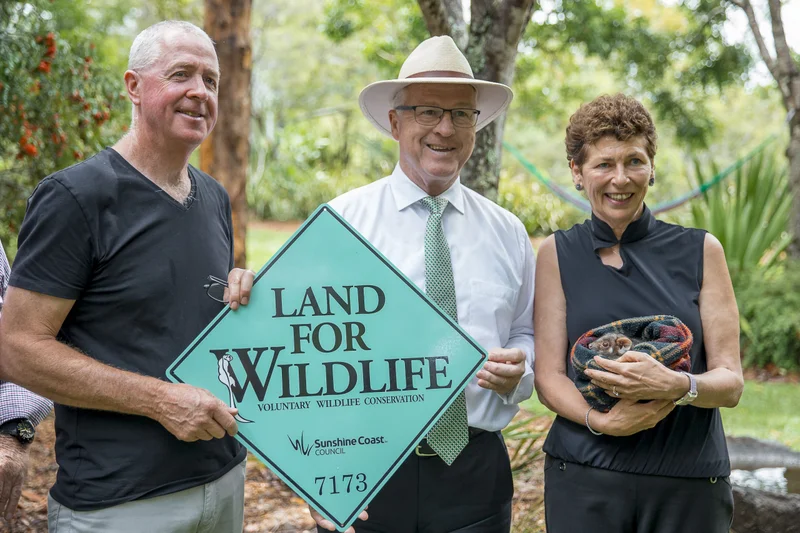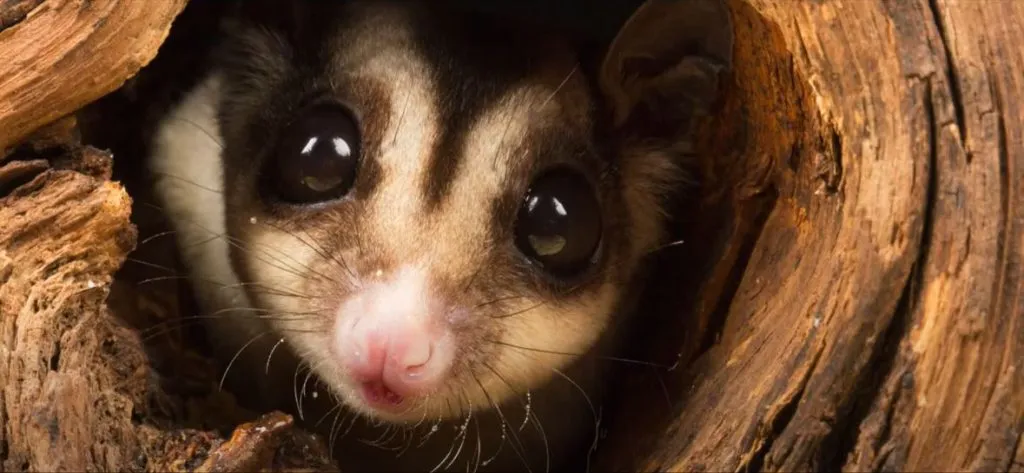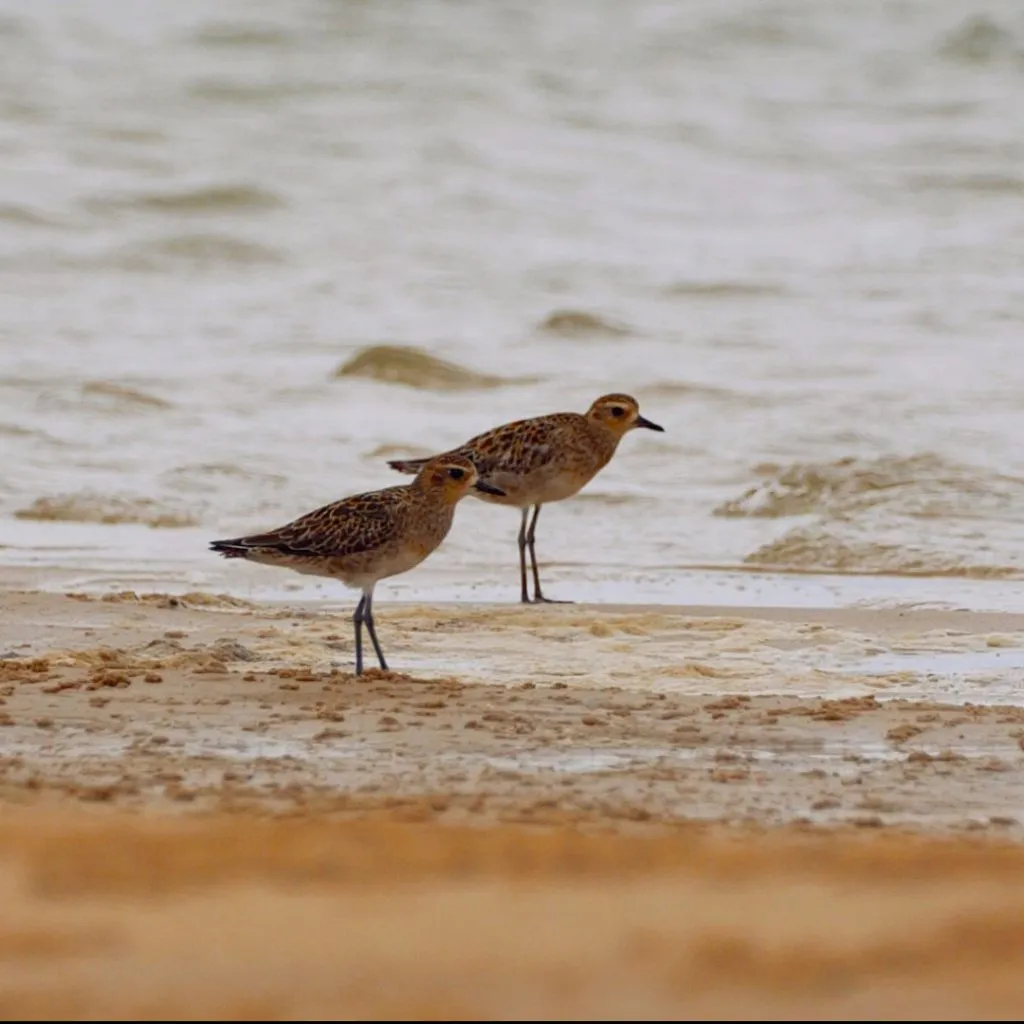Your Environment Levy makes all the difference

With the hustle and bustle of everyday life, you’ve probably never stopped to think, what is the Environment Levy? And, what is it being used for? The Environment Levy is part of what you pay in your bi-annual rates notice.
The good news is, your Levy goes towards heaps of great programs and initiatives that help Sunshine Coast Council deliver a healthy environment and liveable region for the community.
Read on…now’s your chance to learn more about the type of projects your Environment Levy supports.
BUYING ENVIRONMENTAL LAND
The Environment Levy’s land acquisition program plays an important role in identifying and purchasing priority land throughout our local government area with high environmental values. These acquisitions aim to protect, preserve and enhance our natural environment and wildlife corridors; consolidate and grow Council’s conservation estate; preserve native plants and animals and create and protect new habitat areas.
During the 2019/20 financial year, thanks to your Environment Levy, Council invested $1.7m to acquire four new properties totalling 90 hectares.
One of these properties is in Landsborough within the Pumicestone Passage Catchment. It is a 65 hectare parcel that adjoins the existing Glass House Mountains National Park. It adds to Council’s impressive conservation estate which now totals more than 7000 hectares.
This particular acquisition protects important native eucalypt and wetland ecosystems, and helps to provide connected vegetation corridors.
Eucalypt belong to Australia’s most widely distributed group of plants and are considered iconic to our identity. The Sunshine Coast is home to more than 50 eucalypt species occurring across a diverse range of environments from coastal floodplains and riparian ecosystems to elevated areas on volcanic and sandstone soils.
According to Council’s 2020 Biodiversity Report, four of our seven endangered regional ecosystems are eucalypt communities – making land acquisitions like this one so important.
This environment reserve also provides habitat for a diverse range of locally significant animal species including the brush-tailed phascogale (Phascogale tapoatafa) and sugar glider (Petaurus breviceps).
As the Sunshine Coast population grows and is expected to exceed 500,000 by 2041, Council is continuing to secure land to expand our green spaces and protect our natural assets. In the future this environment reserve will also provide opportunities for nature-based recreation and a green frame for new communities in the Beerwah East Major Development Area.

Sugar gliders call council's conservation estate home.
KIDS IN ACTION
Kids in Action is Sunshine Coast Council’s award-winning environmental education initiative which increases children’s understanding of our environment. It also inspires these young minds and provides opportunities for them to take action to help our environment and be sustainable.
The program began in 2012 and has been growing stronger each year. In fact, the 2019 program was recognised for the role it played in building deeper connections between the Jinibara and Kabi Kabi/Gubbi Gubbi First Nations people and our region’s children, by winning the 2020 Queensland Reconciliation Award for partnership.
The Kids in Action program is designed for students from Years 5-8 and encourages them to plan and deliver peer-to-peer learning experiences on an environmental project they’ve created themselves.
It also connects participating classes with local environment groups and mentors, creating genuine learning exchanges between our current and future environmental custodians.
Each year the program focuses learning experiences and projects on a theme. The 2021 theme is Future Dreaming: Imagining our shared journey and seeks to explore new ways of understanding, appreciating and engaging with hopeful sustainability concepts, models and wisdoms that are both traditional and contemporary.
Thanks to Environment Levy funding, and the Kids in Action sponsors, Council is proactively engaging with the next generation and helping to encourage the future custodians of our natural environment.

Council's award-winning environmental education initiative Kids in Action.
PARTNERING WITH THE COMMUNITY
The Environment Levy is all about working with our community to protect and enhance the Sunshine Coast’s unique biodiversity. For example, many landholders choose to participate in Environment Levy supported programs like Voluntary Conservation Agreements (VCAs) and Land for Wildlife to protect bushland areas under private ownership. This is great, because it helps Council protect native habitat areas that aren’t publicly-owned.
Through the VCA program, Council supports landholders to permanently protect and conserve significant areas of privately owned bushland. During the 2019/20 financial year 84 VCA participants collectively protected 1300 hectares.
Land for Wildlife participants work with Council’s Environmental Officers to identify on-ground projects to protect and enhance the natural ecosystems on their land. Levy funds are directed back into the community by providing native plants and other incentives to assist with environmental improvements. Throughout the 2019/20 financial year 26,000 seedlings and 117 nestboxes were provided to more than 1200 Land for Wildlife members.
We certainly owe our thanks to the network of volunteers and partners who participate in these programs, as their efforts go hand-in-hand with Council’s efforts to preserve and maintain our natural environment.
SHOREBIRD CONSERVATION
As part of the Environment Levy, Council has been working to raise awareness about the need to protect the resident and migratory shorebirds, which share our Sunshine Coast shorelines, through the Shorebirds Conservation Action Plan.
Shorebirds are among the most threatened group of bird species in the world and each year they visit our Sunshine Coast shorelines to feed and rest. Beginning their journey in the Northern Hemisphere – from places like Siberia, China and Alaska – the shorebirds travel up to 25,000 kilometres before landing on our shores in the summer months to feed and rest.
In fact, over its lifetime, a shorebird can fly 380,000 kilometres during migration, which is why it’s essential the birds are given the chance to rest and put on weight for their difficult return journey.
A series of education videos have been created to raise awareness of these birds’ unique values. They can be viewed via Council’s YouTube Channel or Facebook.
It’s hoped a new mural at Golden Beach, featuring artwork of both migratory and resident shorebirds, which inhabit the local area, will help raise awareness and protect these incredible species.

Pacific golden plovers, image by Zachary Daguiar.
So, the next time you see the Environment Levy on your rates notice, you can rest assured that the money is being invested wisely to protect our plants and animals, deliver a healthy environment and maintain the wonderful Sunshine Coast lifestyle we know and love.
The Environment Levy is a key funding source to protect and enhance our natural assets as outlined in Council’s Environment and Liveability Strategy – a long term plan to deliver a healthy environment and liveable Sunshine Coast by 2041. To learn more visit els.sunshinecoast.qld.gov.au.
Last edited on:
First published on: